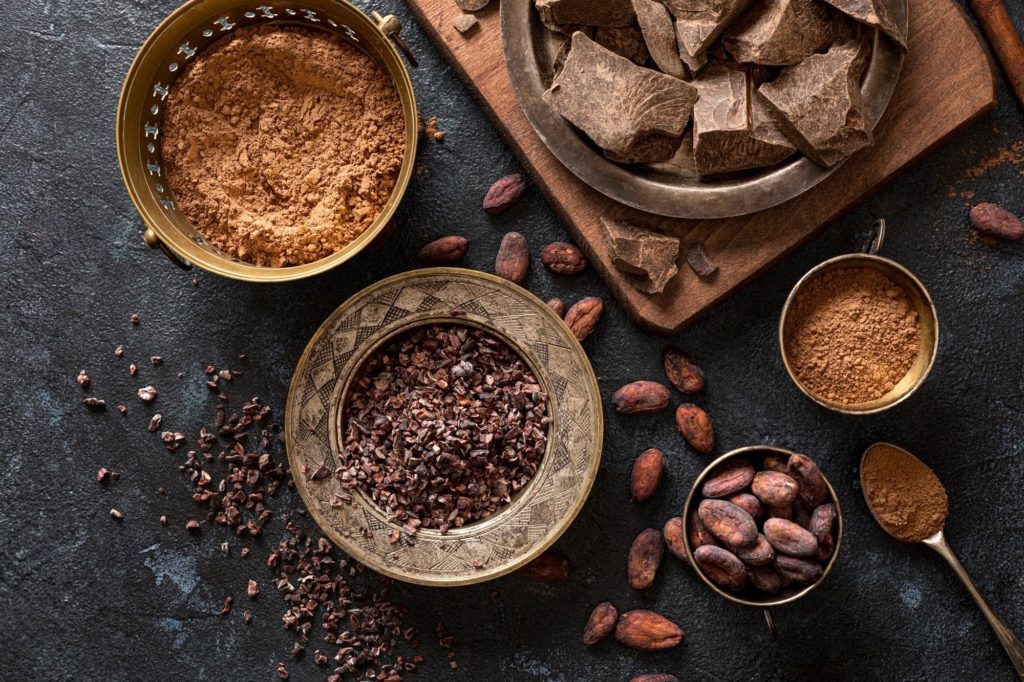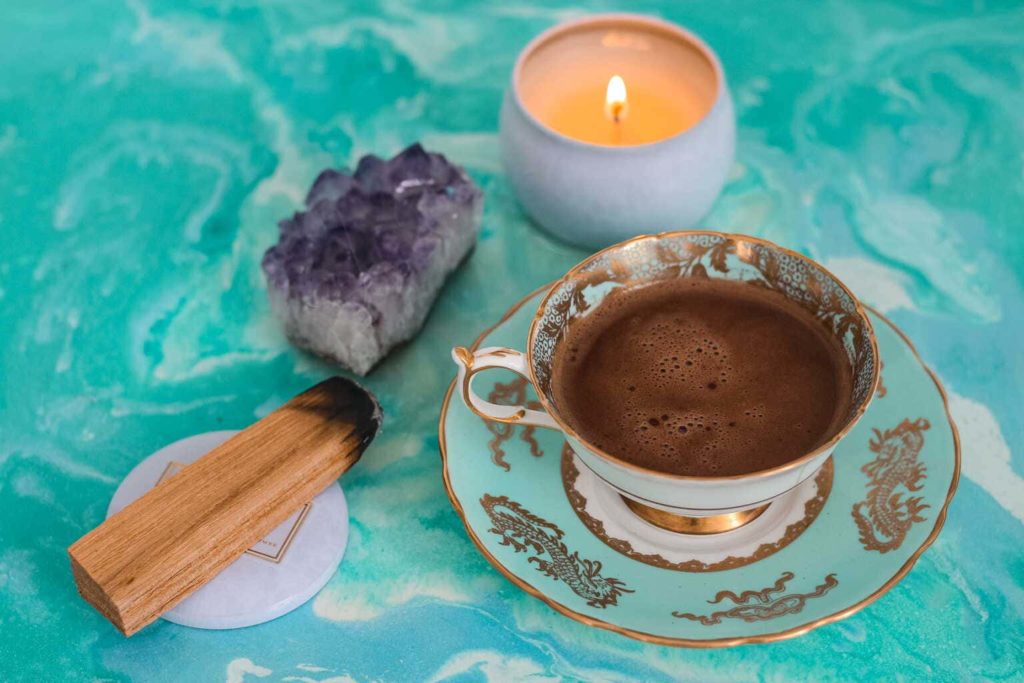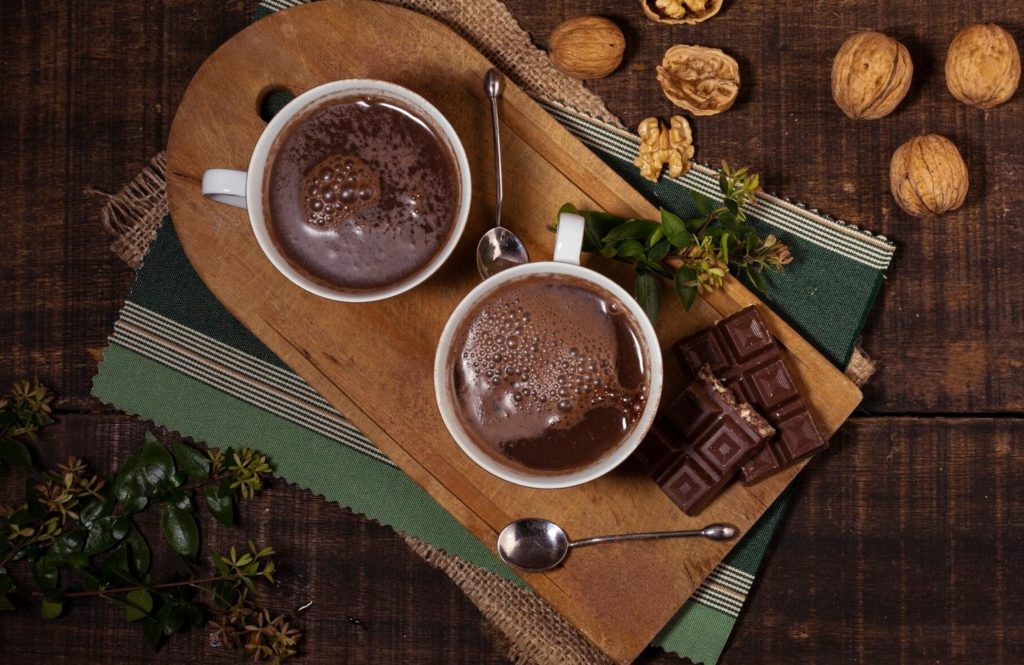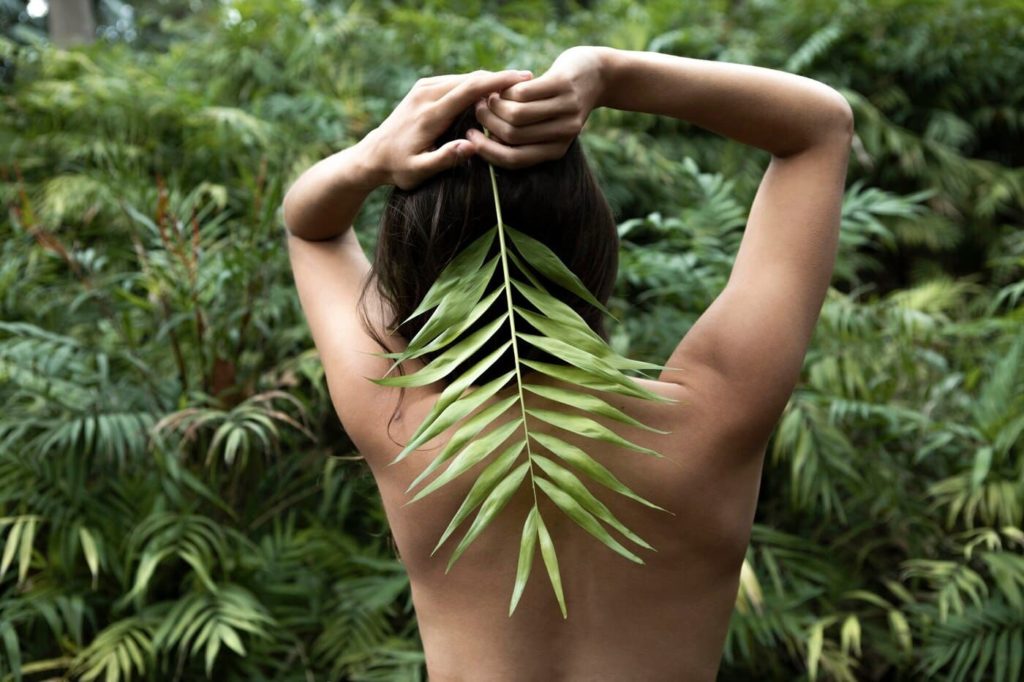Cacao is one of the most popular and versatile ingredients in the world of food. Whether as chocolate, a cocoa drink or as an ingredient in pastries and desserts – cacao is ubiquitous and loved by many. But how is cocoa made? In this article, you’ll find out everything you need to know about the “from bean to cocao” process.
The cacao bean
The fascinating process of making drinking chocolate begins with the cocoa bean, which originates in the tropical regions of countries such as Ghana, the Ivory Coast and Ecuador. This is where the cacao tree thrives, whose fruits contain the precious seeds that we know as cocoa beans. The harvesting of this valuable raw material is a painstaking manual process in which the cocoa beans are picked by hand by experienced harvesters. This step ensures that only the highest quality beans are selected for further processing.
After harvesting, the next step in the cocoa beans’ long journey takes place: opening the fruit to reveal the seeds. These seeds, which form the heart of the drinking chocolate, are carefully removed from the fruit. Once exposed, the cocoa seeds undergo the drying process, which takes place either under the hot tropical sun or in special drying facilities. This careful drying is crucial to reduce moisture and ensure that the cocoa beans are in the ideal condition for further processing.
Processing of cacao by the Mayas
The Mayans processed the cacao beans in the traditional way by first placing the beans on special stone slabs and then roasting them to develop their aroma and flavor. The roasted beans were then ground and mixed with water or other ingredients such as chili, vanilla and honey to create a frothy drink known as “xocolatl”. This drink was considered an elixir of the gods by the Mayans and was an important part of their religious ceremonies. Today, the cacao bean is processed in a modern way, but the traditional processing of the Mayas has an important influence on modern cocoa production and chocolate making. If you would like to find out more about Xocolatl a.k.a hot chocolate, click here.
The processing of cacao today
After the cocoa beans are dried, they are taken to factories where they are processed further. The processing of cacao is a complex process that takes place in several stages. The first steps in processing are sorting and cleaning the beans. The beans are sorted according to size, shape and color. Impurities such as stones or twigs are also removed.
The next step is to roast the beans. Roasting gives the cocoa its characteristic taste and aroma. The beans are roasted in ovens at temperatures of 100 to 150 degrees Celsius. After roasting, the beans are broken to release the cacao nibs. The nibs are then ground in a special mill to produce a liquid mass known as cocoa liquor. Cacao butter is then extracted by pressing the cocoa mass. Cacao butter is used as a separate raw material and is an important component of chocolate. The rest of the mass is called cocoa powder.
In addition to the steps mentioned above, there are other processing steps that may be required depending on the intended use of the cocoa. For example, the cacao mass can be fermented to improve the taste. It can also be mixed with sugar, milk or other ingredients to make chocolate.
Chocolate production
The production of chocolate is a complex process that takes place in several steps. The first step is the production of cocoa mass, which is the basis for all types of chocolate. The cocoa mass is made from roasted and ground cocoa beans.
The next step is the production of the chocolate mixture. The cacao mass is mixed with sugar and milk powder. Depending on the type of chocolate, different ingredients are added, such as vanilla, nuts or fruit. The chocolate mixture is then ground in a roller mill to create a smooth and creamy texture. This process is also known as conching. Conching takes several hours until the chocolate has reached the desired texture and flavor.
As soon as the chocolate is ready, it is poured into molds and cooled. Molding can be done manually or automatically. Cooling takes place in tempering machines. Tempering gives the chocolate its characteristic gloss and its typical broken edges. The cooled chocolate is then packaged and prepared for sale. The packaging can be made of various materials, such as paper, plastic or metal.
Conclusion
From bean to cacao is a fascinating process that requires a lot of work and know-how. The cocoa beans are carefully picked, sorted, cleaned and roasted to release their unique aromas and flavors. Combining them with other ingredients creates chocolate and other delicious products that we all love. Whether as a snack or as an ingredient in a favorite dessert, cacao is a versatile and delicious food that never ceases to delight us.




